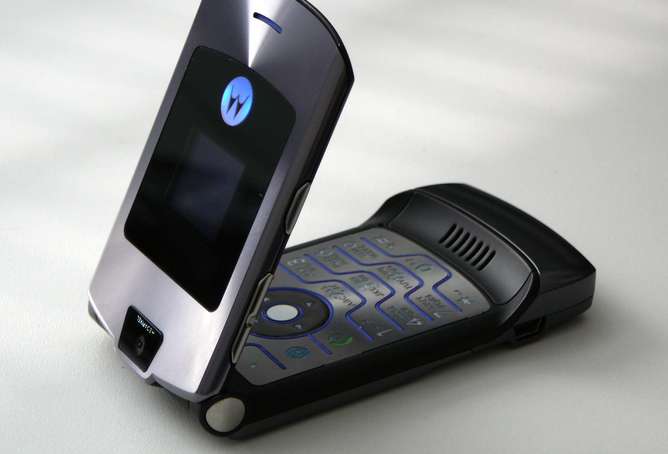Motorola brought us the mobile phone, but ended up merged out of existence

If you own a mobile phone, chances are that it isn't made by Motorola. But it was not always this way: Motorola was once the brand most associated with the mobile phone, and the firm whose products first popularised them. Now, a year after its purchase by Lenovo, the Chinese firm has announced the brand will no longer exist. So what went wrong for Motorola?
The mobile phone's origins can be traced back to 1947 and a team of engineers lead by Douglas Ring working for Bell Labs in the US. All the basic principles and features we now associate with a mobile phone and cellular network were established by this team, but the technology of the day was simply incapable of realising their visionary concepts. It wasn't until April 1973 that a team of Motorola engineers led by Martin Cooper created the world's first functioning cellular mobile phone. And even then there wasn't a network for it to use: the first experimental cellular network was built in Chicago four years later, and didn't reach the UK until 1985.
There were at the time two major companies designing and manufacturing mobile phones, Motorola and Nokia, but the more innovative of these two was most definitely Motorola. This is the firm that gave us the iconic DynaTAC 8000 in 1984, the world's first flip phone, the MicroTAC, in 1989, and in 1996 the world's first clamshell-style phone, the StarTAC, also the smallest, lightest mobile of its day.
In 1991 Motorola released the world's first GSM cellular handset (Motorola 3200). In 1993 it manufactured the world's first mobile phone using the GSM 1800MHz band (Motorola m300), followed by the first tri-band mobile phone in 1999 (Motorola L7089). Together BT Cellnet and Motorola launched the world's first GPRS mobile data service in 2000, using the Motorola Timeport T-260.
In fact, right from the beginning world firsts were what Motorola did. The company that would become Motorola began life in 1928 as Galvin Manufacturing Corporation, of Chicago. It quickly established itself as a specialist in radio technology, developing the first in-car radios – hence MOTOR (representing the car) and VictrOLA (representing sound, from the Victrola Talking Machine Company).
The firm went on to create the first walkie-talkies for military use, the in-car radio-telephone, the world's first pager, and we even heard Neil Armstrong's immortal words when he stepped foot onto the lunar surface in 1969 thanks to Motorola radio technology. And this is in addition to the firm's pioneering work on semiconductors, microprocessors (the Motorola M68000 family powered popular computers such as the Atari ST, Amiga and early Apple Macintoshes) televisions, and barcode scanners.
Motorola was the largest mobile phone manufacturer in the world before Nokia knocked them off their top spot in 1998. The firm had a brief resurgence in fortunes with 2004 launch of the Razr, the world's top-selling clamshell mobile and one of the thinnest ever produced. But between 2006 and 2009, Motorola's mobile market share plummeted from 21% to 6%.

How did it all go wrong?
Motorola's problem was that it was a hardware technology company, but from the mid-2000s it was software driving the mobile phone business. Here Motorola was weak – their phone's interface was seen as clunky compared to its rivals, and their smartphones dithered between Linux and Windows-based operating systems. Products such as the Motorola Q, a Blackberry-like smartphone with a QWERTY keyboard, fared poorly compared to the competition, while the arrival of the Apple iPhone in 2007 changed the game for everyone, as the mobile phone morphed into a pocket computer.
In 2009, under CEO Sanjay Jha, Motorola refocused on producing Android phones, launching its Droid phone range which was picked up by US telco Verizon. That Droid sales exceeded those of the iPhone in the US encouraged Google to take an interest in purchasing Motorola. And so in 2011, Motorola was split in two: Motorola Mobility, which focused on consumer devices including mobile handsets was sold to Google for US$12.5 billion in May 2012, leaving the rump as Motorola Solutions.
Motorola's appeal to Google was as a manufacturing company to produce its own devices, the Nexus phones, and to gain access to Motorola's patent catalogue. The Moto range of smartphones released under Google's ownership were well received, with the entry level Moto G garnering 6% of the UK market share in Feburary 2014. The high-end Moto X fared much more poorly, and US manufacturing was closed and moved to China and Brazil.
Today Motorola Mobility has a 1% share of the global mobile phone market, but stronger in the US with around 6.8%. Nevertheless the continuing global market share decline and year-on-year financial losses saw Google sell the firm on once more, to Lenovo for US$3 billion in late 2014. For Lenovo it was a opportunity to gain foothold in the US market with an established brand.
So for while it seemed as though Motorola would live on – albeit a pale shadow of its former self – under Chinese ownership. Instead the company that gave us the mobile phone and so many world firsts has ended its days passed from pillar to post, sold and re-sold, until the iconic Motorola brand was finally merged out of existence.
And so Motorola joins a group of departed tech giants that ploughed a similar path: Atari, Commodore, SGI, Sun – how the mighty are fallen.
Source: The Conversation
This article was originally published on The Conversation. Read the original article.
![]()




















